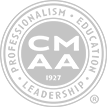Relax to Release
Relax to Release
By Dr. T. J. Tomasi, Keiser University College of Golf Senior Faculty and Director of Research

Jon, my student in this week’s lesson, has only been playing for about four months and, as you can see, he has a large chest and a lot of muscle. His flexibility is medium with a tender back, but when you’re this strong, you tend to overuse your strength trying to force the club where you want it to go – and that ruins your swing.
As a beginner, there are a number of things Jon has to work on, but the concept that I want him to take-away from our time together is to swing on a shallow plane rather than over-the-top and steep, as he did before the lesson. Improving his plane was our main task, but to accomplish it, we first had to narrow his stance to activate his lower body. In addition, he relaxed his arms and wrists to create a power source (leverage) that he wasn’t maxing out.
It is very interesting to watch Jon go from a rigid, trip-wire-tense golfer to one who uses his wrists and arms correctly without squeezing the stuffing out of the grip. I asked him to waggle like PGA Tour star Jason Dufner, and that image did the trick. This trigger concept is an example of learning-by-exaggeration where you tell the stiff golfer to free-wheel it and the flippy golfer to ‘own the club’ – both creating an angle somewhere between the merry-go-round and Ferris wheel. Can’t you just see it! Evocative language is the key when you’re planting images that will grow a new swing.
Note how the shaft is angled across his upper arm so that an extension of it points at the target line. This is no doubt the first time this new golfer has even been on plane and approached the ball from the inside.

After his Dufner waggle (a kinesthetic cue), I asked him to swing between the noodle and the guide on the left (a visual cue) – you can see it helped him to swing inside-out vs. out-to-in. The position in the previous photo allows the correct release seen in this photo.
Note 1: This is an example of teaching multi-sensory – using auditory (verbal), feel, and visual cues to promote a vivid image of the task. Remember ‘images cue motor behavior.’
Note 2: It’s not really inside-out – it’s inside to square to inside, but I want him to exaggerate at this point in order to trigger the inside feel. We can always dial it back later.
Note 3: At this stage, we are at what I call the macro-level, where humans do their learning by translating images to feel and then into body motion. This is a very different world from the micro-level world of impact physics described by the modern ball flight laws and recorded by modern technology such as TrackMan. Both have their place in teaching/playing, and both have their own language. As a teacher, you should be at home in both worlds.
If you’d like to study with Dr. Tomasi and other PGA Master Professionals, contact The College of Golf today.














